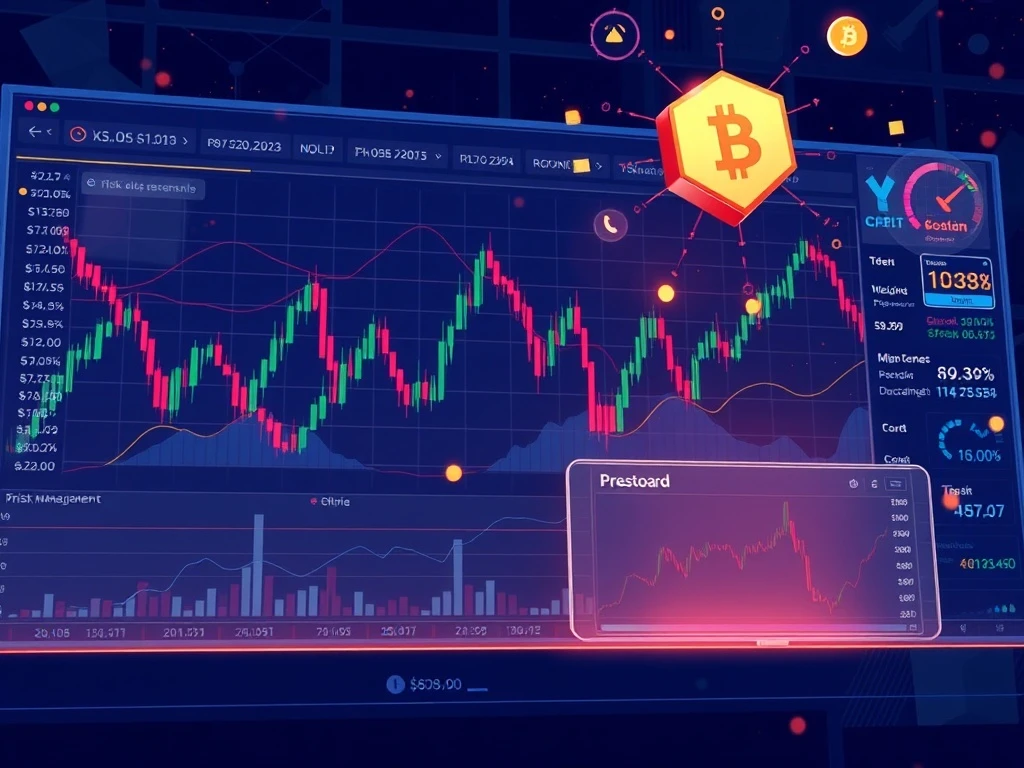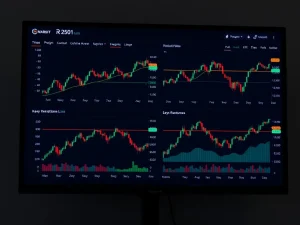Crucial Binance Collateral Ratios Updates: Navigating Portfolio Margin Amidst Volatility

Are you a cryptocurrency trader utilizing Binance’s advanced Portfolio Margin program? If so, a significant update from the world’s largest crypto exchange demands your attention. Binance has announced crucial adjustments to its Binance collateral ratios for assets within its Portfolio Margin program, effective mid-July 2025. These changes are a strategic move to bolster risk management in the face of ongoing market volatility, directly impacting how you manage your leveraged positions.
Understanding Binance Collateral Ratios: What’s Changing?
Binance’s recent announcement details revisions to the collateral ratios for various assets within its Portfolio Margin program, specifically on July 15 and July 18, 2025. These adjustments are a standard part of Binance’s operational procedures, designed to recalibrate the required collateral based on shifting risk profiles of different assets, particularly altcoins and derivatives.
What does this mean for you?
- Increased Requirements: For some assets, you might find yourself needing to post more collateral than before to maintain the same leverage.
- Reduced Requirements: Conversely, other assets may see a reduction in their collateral requirements, potentially freeing up capital.
- Targeted Adjustments: These changes are not across the board but are specifically aimed at optimizing risk exposure for leveraged traders in particular asset classes.
Binance emphasizes that these updates are a routine aspect of their proactive approach to maintaining a healthy trading environment, rather than a signal of broader market distress. Previous adjustments, such as those on July 4, 2025, were integrated smoothly without significant disruption, reinforcing this perspective.
Why the Focus on Risk Management Amidst Market Volatility?
The cryptocurrency market is known for its dynamic and often unpredictable nature. Periods of heightened market volatility are common, presenting both opportunities and risks. Binance’s decision to revise collateral ratios is a direct response to this inherent characteristic of the crypto landscape.
Effective risk management is paramount for any financial institution, especially one handling billions in daily trading volume. By periodically updating collateral ratios, Binance aims to:
- Safeguard Users: Prevent excessive leverage from leading to cascading liquidations during sharp price movements.
- Protect the Platform: Maintain the stability and integrity of its margin trading system.
- Align with Asset Volatility: Ensure that margin requirements accurately reflect the current risk associated with specific assets.
This proactive stance ensures that the platform can adapt quickly to changing market conditions, providing a more secure environment for its users. It’s a testament to their commitment to operational resilience, rather than a reaction to an immediate crisis.
How Do These Changes Impact Your Portfolio Margin and uniMMR?
The core metric affected by these collateral ratio adjustments is the Unified Maintenance Margin Ratio (uniMMR). For traders utilizing Portfolio Margin accounts, the uniMMR is a critical indicator of your account’s health and proximity to liquidation.
When collateral ratios change:
- Leverage Dynamics Shift: The amount of leverage you can effectively use on certain assets changes, even if your nominal leverage settings remain the same.
- Portfolio Stability Alters: Your overall portfolio’s margin health, as reflected by your uniMMR, will be re-calculated based on the new ratios.
- Liquidation Risks: If your uniMMR falls below the required threshold due to increased collateral requirements, you face a higher risk of liquidation.
It’s crucial for Portfolio Margin account holders to closely monitor their uniMMR in real-time. Binance advises users to review their positions and leverage settings promptly to ensure they maintain healthy margin levels. Remember, these changes specifically apply to Portfolio Margin accounts and the specified assets, not all users or trading products.
Actionable Insights for Navigating the Updates
With these revisions in place, what should Portfolio Margin traders do? Staying informed and proactive is key to mitigating potential risks and optimizing your trading strategy.
Here are some actionable insights:
- Review Your Positions Immediately: Log into your Binance account and check your current Portfolio Margin positions, especially those involving altcoins and derivatives mentioned in the update.
- Monitor Your uniMMR Constantly: Use Binance’s real-time monitoring tools to keep a close eye on your Unified Maintenance Margin Ratio. This is your primary indicator of account health.
- Adjust Collateral or Leverage: If your uniMMR is approaching critical levels, consider adding more collateral to your account or reducing your leverage on affected assets.
- Stay Informed: Regularly check Binance’s official announcements for further updates on collateral ratios and risk management policies.
- Understand the Routine: Recognize that these adjustments are part of Binance’s ongoing commitment to a robust trading environment, not an anomaly.
The market reaction so far has been largely measured, with no significant backlash or regulatory scrutiny. This indicates that the industry perceives these adjustments as a necessary and routine part of managing a large-scale margin trading platform.
Binance’s Proactive Stance: A Standard for Industry Risk Management
Binance’s consistent approach to adjusting collateral ratios underscores its commitment to dynamic risk management. This isn’t a one-off event but a pattern of recalibrations observed over recent months and years. By aligning collateral requirements with current market volatility, the exchange aims to safeguard both its platform and its users from potential systemic risks inherent in leveraged trading.
This proactive methodology sets a standard within the cryptocurrency industry. As the digital asset landscape continues to evolve rapidly, such iterative adjustments are expected to remain a routine and essential aspect of Binance’s operational framework, ensuring a more stable and secure trading environment for millions of users worldwide.
Frequently Asked Questions (FAQs)
1. What are Binance collateral ratios and why are they important?
Binance collateral ratios determine the amount of collateral required to open and maintain leveraged positions on the platform. They are crucial for risk management, as they dictate the maximum leverage users can employ and help prevent excessive losses during periods of high market volatility. Adjustments ensure that the risk associated with different assets is accurately reflected in margin requirements.
2. Who is affected by these collateral ratio adjustments?
These specific adjustments primarily affect users with Binance Portfolio Margin accounts who are trading the specified altcoins and derivatives. Standard margin or futures accounts might have different rules, so it’s important to confirm if your account type and assets are impacted.
3. What is uniMMR and why should I monitor it?
uniMMR stands for Unified Maintenance Margin Ratio. It’s a critical metric for Portfolio Margin account holders that indicates the health of your leveraged positions. Monitoring your uniMMR closely is vital because changes in collateral ratios directly impact it. If your uniMMR falls below a certain threshold, your positions may be subject to liquidation, leading to potential losses.
4. Are these collateral ratio changes a sign of market distress?
Binance has clarified that these adjustments are part of its routine operational procedures and ongoing risk management strategy, rather than a signal of broader market distress. The exchange frequently updates these ratios to adapt to changing market conditions and asset volatility, a practice common in financial markets.
5. What should I do if my uniMMR is affected by these changes?
If your uniMMR is negatively affected, you should take immediate action. This typically involves either adding more collateral (e.g., transferring more funds to your Portfolio Margin account) or reducing your leverage by closing some positions. Binance advises users to review their positions and leverage settings promptly to maintain healthy margin levels.
6. How often does Binance adjust collateral ratios?
Binance typically updates collateral ratios periodically, often every few weeks or months, to ensure margin requirements remain aligned with asset volatility and market conditions. These are routine adjustments aimed at proactive risk management within their Portfolio Margin program.









